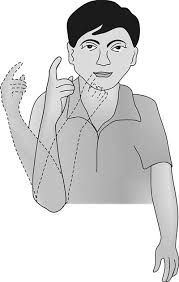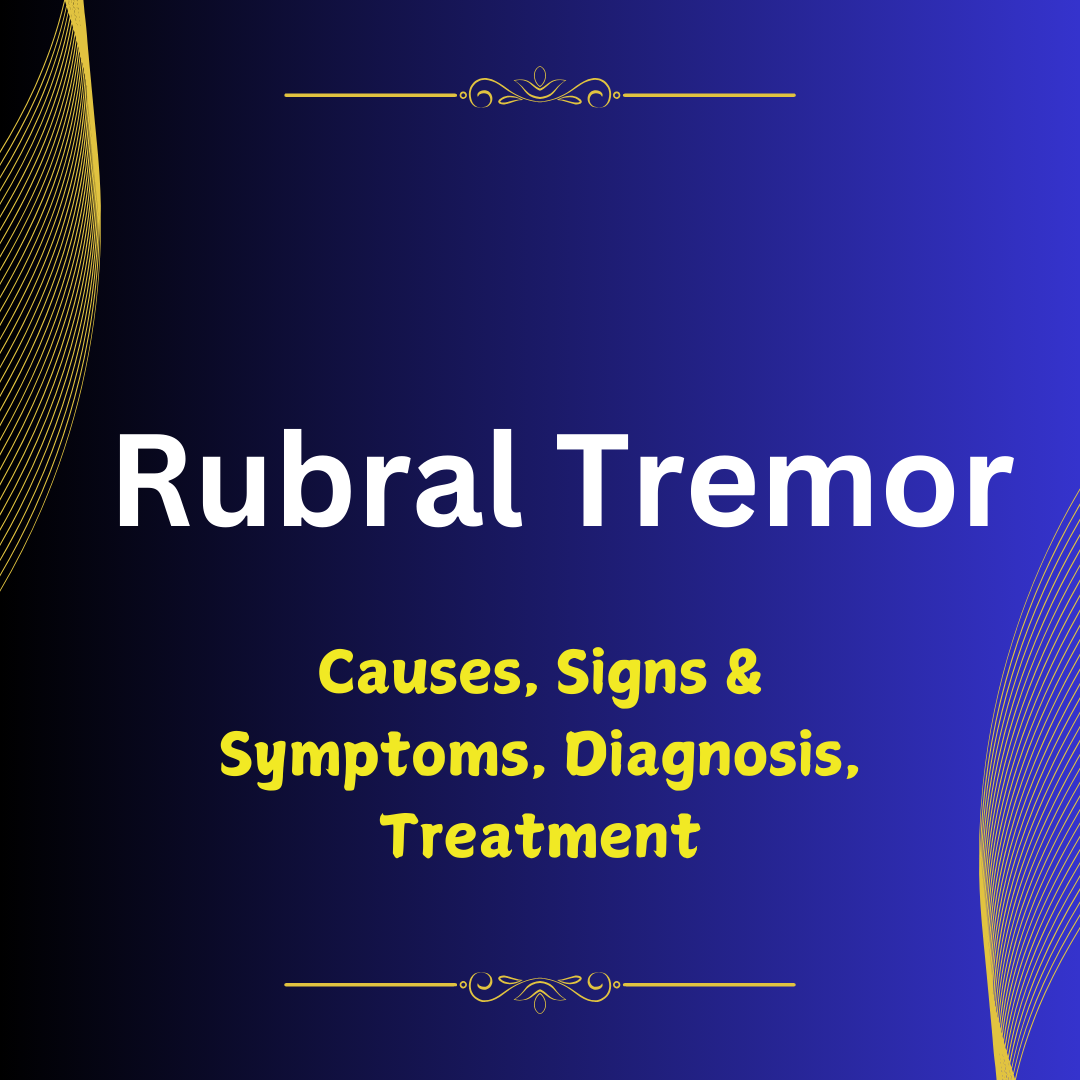What is Rubral Tremor?

Rubral tremor, also known as Holmes tremor, is a neurological disorder characterized by a coarse, low-frequency tremor that occurs during rest, posture, and action. It is typically caused by lesions affecting the red nucleus and its connections in the midbrain. The tremor is often unilateral (affecting one side of the body) and can severely impair motor function and daily activities.
Rubral Tremor Causes
Rubral tremor is usually caused by damage to the midbrain, particularly the red nucleus and surrounding structures. The most common causes include:
- Stroke: An interruption of blood flow to the midbrain, often due to an infarction or hemorrhage.
- Trauma: Head injuries that affect the midbrain.
- Multiple Sclerosis (MS): A chronic autoimmune disease that leads to demyelination and lesions in various parts of the central nervous system, including the midbrain.
- Brain Tumors: Growths that exert pressure on or invade midbrain structures.
- Infections: Certain infections can cause inflammation and damage to the midbrain.
Rubral Tremor Signs and Symptoms

The key characteristics of rubral tremor include:
- Coarse Tremor: A pronounced, slow-frequency tremor that is most evident during voluntary movement and at rest.
- Unilateral Involvement: Typically affects one side of the body, usually the side opposite the brain lesion.
- Postural Instability: Difficulty maintaining balance and posture.
- Ataxia: Lack of coordination and precision in voluntary movements.
- Dysmetria: Difficulty controlling the distance, power, and speed of a movement.
Rubral Tremor Treatment
Treating rubral tremor is challenging due to its resistance to conventional therapies. Management focuses on alleviating symptoms and improving quality of life:
Medications:
Levodopa: May be helpful if the tremor has a dopaminergic component.
Clonazepam: Reduces tremor amplitude in some cases.
Gabapentin: Provides mild relief in certain patients.
Propranolol: Though more effective for essential tremors, it may have some benefit.
Surgical Interventions:
Deep Brain Stimulation (DBS): Targeting the thalamus or subthalamic nucleus has shown promising results in some cases.
Thalamotomy: Surgical destruction of part of the thalamus may reduce tremor but carries risks.
Physical Therapy:
- Exercises to improve coordination and reduce tremor impact.
- Use of adaptive devices to aid daily activities.
- Occupational Therapy: Helps patients develop strategies to perform tasks despite tremor.
- Stress Management: Relaxation techniques can help reduce tremor exacerbation due to stress.
Rubral Tremor in Multiple Sclerosis and Claude Syndrome
In Multiple Sclerosis (MS), rubral tremor can occur due to demyelination and lesions in the midbrain affecting the red nucleus. MS patients with rubral tremor may experience significant functional impairment and require tailored rehabilitation programs to manage symptoms.
In Claude Syndrome, rubral tremor is one of the hallmark symptoms due to the involvement of the red nucleus and surrounding structures. The tremor is often accompanied by oculomotor nerve palsy and contralateral hemiparesis.
Holmes vs. Rubral Tremor
Holmes tremor and rubral tremor are often used interchangeably, but some distinctions can be made:
Holmes Tremor: Refers to a broader category of tremor caused by brainstem or thalamic lesions, affecting various pathways.
Rubral Tremor: Specifically linked to lesions in the red nucleus or its connections.
Despite these distinctions, the terms are frequently synonymous, as rubral tremor is a subtype of Holmes tremor.
Rubral Tremor vs. Essential Tremor
Rubral tremor and essential tremor are distinct neurological conditions:
Rubral tremor and essential tremor (ET) differ significantly in their clinical presentation and underlying mechanisms:
a) Cause:
Rubral Tremor: Results from structural damage in the midbrain or cerebellothalamic pathway.
Essential Tremor: Likely involves genetic and neurophysiological factors, without evident structural brain lesions.
b) Frequency:
Rubral Tremor: Low frequency (2–4.5 Hz).
Essential Tremor: Higher frequency (4–12 Hz).
c) Type:
Rubral Tremor: Combination of resting, postural, and intention tremors.
Essential Tremor: Typically postural and kinetic tremors, without resting tremor.
d) Distribution:
Rubral Tremor: Often unilateral and localized to one side.
Essential Tremor: Usually bilateral and symmetric, affecting hands, head, or voice.
e) Response to Treatment:
Rubral Tremor: Poor response to typical tremor medications, with better outcomes from DBS.
Essential Tremor: Often improves with beta-blockers, primidone, or alcohol consumption.
Conclusion
Rubral tremor is a complex and debilitating condition resulting from lesions in the midbrain. Understanding its causes, symptoms, and treatment options is crucial for effective management and improving the quality of life for affected individuals. While it shares some similarities with other tremor disorders, its distinct characteristics and association with midbrain pathology set it apart. Early diagnosis and a multidisciplinary approach to treatment can help mitigate the impact of rubral tremor on daily functioning.
FAQs on Rubral Tremor
1. What is Rubral Tremor?
Rubral tremor, also known as Holmes tremor, is a rare and complex neurological condition characterized by a combination of resting, postural, and intention tremors. It is caused by damage to the midbrain, particularly the red nucleus and associated cerebellothalamic pathways, leading to abnormal motor control and low-frequency tremors.
2. What causes Rubral Tremor?
Rubral tremor is caused by structural damage in the midbrain or surrounding areas. Common causes include:
- Stroke: Damage to the red nucleus or adjacent pathways.
- Traumatic Brain Injury (TBI): Midbrain trauma.
- Multiple Sclerosis (MS): Demyelination in the midbrain or cerebellar pathways.
- Brain Tumors: Tumors affecting the midbrain.
- Infections: Conditions like encephalitis that damage the midbrain.
3. What are the symptoms of Rubral Tremor?
The primary symptoms include:
- Tremor at rest, during posture holding, and intentional movement.
- Low-frequency tremor (2–4.5 Hz).
- Unilateral tremor (affects one side of the body).
- Tremor worsens with voluntary movement or fatigue.
- Associated symptoms like muscle weakness, ataxia, or paralysis due to brainstem involvement.
4. How is Rubral Tremor diagnosed?
Diagnosis is based on:
- Clinical Examination: To identify the specific tremor pattern.
- Imaging Studies: MRI or CT scans to detect lesions in the red nucleus or surrounding structures.
- Differentiation: Distinguishing rubral tremor from essential tremor or Parkinson’s disease.
5. Can Rubral Tremor be treated?
Treatment options for rubral tremor aim to manage symptoms:
- Medications: Clonazepam, levodopa, gabapentin, and propranolol may offer some relief.
- Surgery: Deep Brain Stimulation (DBS) targeting the thalamus or subthalamic nucleus is effective for some patients.
- Rehabilitation: Physical and occupational therapy can improve coordination and reduce the tremor’s impact on daily life.
- Stress Management: Techniques like relaxation and mindfulness may help reduce tremor severity.
6. How does Rubral Tremor differ from Essential Tremor?
- Cause: Rubral tremor results from structural brain damage; essential tremor is likely genetic.
- Frequency: Rubral tremor has a lower frequency (2–4.5 Hz), while essential tremor is higher (4–12 Hz).
- Types of Tremor: Rubral tremor includes resting, postural, and intention tremors, while essential tremor is typically postural and kinetic.
- Response to Treatment: Rubral tremor often resists medication, while essential tremor may respond well to beta-blockers or primidone.
7. Is Rubral Tremor related to Multiple Sclerosis (MS)?
Yes, rubral tremor can occur in patients with MS due to demyelination in the midbrain or cerebellar pathways. In MS, this tremor is often severe and debilitating, requiring symptomatic management alongside MS-specific therapies.
8. How is Rubral Tremor connected to Claude Syndrome?
Claude Syndrome, caused by a stroke in the midbrain, often affects the red nucleus and surrounding structures. This condition frequently includes rubral tremor as a symptom, along with other neurological deficits like oculomotor nerve palsy and ataxia.
9. What is the difference between Holmes tremor and Rubral tremor?
Holmes tremor is a broader term that refers to tremors caused by brainstem or thalamic lesions. Rubral tremor is a subtype of Holmes tremor specifically linked to damage in the red nucleus and its connections.
10. What is the prognosis for Rubral Tremor?
Rubral tremor is often chronic and challenging to treat. While symptom management can improve quality of life, complete resolution is rare. Early intervention, physical therapy, and advanced treatments like DBS can help reduce disability and enhance daily functioning.
You May Also Like
How to Break Social Media Addiction in 2024: Proven Methods for Lasting Freedom
What is Phubbing? The Surprising Impact of This 2024 Relationship Killer
Understanding Leptospirosis: A Comprehensive Guide to Animal Health in 2024
